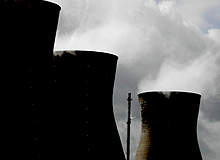
The Mthombo Crude Oil Refinery project will be located in the Coega Industrial Development Zone near Port Elizabeth in the Eastern Cape of South Africa. It is an initiative taken by the state owned PetroSA to meet South Africa’s demand for refined oils. The refinery will process 400,000bpd of crude oil and will be the largest in the continent.
The project aims to meet the growing demand for refined oil, which is outstripping the country’s current refining capacity of 700,000bpd. It is estimated that by 2015 the nation will import an additional 1.5bn litres of fuel a year. The existing ageing refineries are on average 40-50 years old. Moreover, the technologies used by these refineries do not meet global emissions standards. Hence the investments made to expand their refining capacities may prove commercially non-viable.
The project was approved by PetroSA in 2007. The pre and full feasibility studies were completed in 2009. The Front-end Engineering and Design (FEED) study of the project is currently being carried out and is scheduled to be completed in early 2012. The construction is scheduled to commence in 2012 upon final approval. Completion is expected by 2015 and commissioning in 2016.
As the project was conceived during a period of economic boom, it was estimated to cost $11bn. It will now cost 25% less ($9bn) due to the fall in construction costs triggered by the global economic crisis.
The new refinery is expected to contribute to the country’s balance of payments for a period of 19 years from the date of commissioning. The project’s contribution to the country’s GDP during the development phase is expected to increase from the existing 0.2% or R3.8bn to 0.5% or R12.6bn a year after commissioning.
It will also improve the economic activity of the Eastern Cape region as the project is expected to create 27,500 temporary and 18,500 permanent jobs.
However, the project has come under criticism and opposition from an oil major on the grounds that such an investment could be better used for increasing the capacity of the existing pipelines from the coast to interiors, which can carry more imported oil.
Contracts
PetroSA received the manufacturing licence in 2008. In the same year, HSBC was appointed as the financial advisor and a UK based company, KBC Advanced Technologies as the technology advisor. A US based engineering company, KBR was also awarded R1bn contract to conduct the feasibility and FEED study.
A consortium of three South African firms, Edward Nathan Sonnenbergs, Mkhabela Huntley Adekeye and Qunta, along with international partners Clifford Chance of UK and Nixon Peabody of US, were appointed as project legal advisers in 2009. In addition, a cooperation agreement was also signed between PetroSA and Coega Development Corporation (CDC) for the planned Mthombo refinery in the same year.
Design
The Mthombo refinery will be designed on a stand-alone and self-sustainable philosophy. It will be designed to process heavy sour crude oil with 90% conversion capability. The products will meet the global emission standards of Euro V which will enable the plant to access global markets. It will also help in the upgrading of the plant without further investments when the country adopts global emission standards.
The plant is being designed to consume less water for cooling purposes by using advanced air cooling methods. It will also discharge less effluent and wastes by using internally recycled water. It will have a flexible production system to process diesel and petrol to meet seasonal and market changes.
Construction and infrastructure
The refinery will be constructed over an area of 600ha.
The crude oil will be pumped to the refinery from a single point mooring (SPM), which is at a distance of 10km from the coast.
Refined oils such as diesel, kerosene and petrol will be pumped to a tank 3km away from the refinery for shipment. By-products like sulphur and coke will be transported through the conveyor belts to a dry bulk storage facility near the harbour.
The refinery will have a partial conversion hydrocracker, a fluid catalytic cracking unit, delayed coker, residue solvent de-asphalting unit, and conventional top of continuous catalytic reformer and a naptha isomerization unit.
It will house utilities such as fire and cooling water, de-mineralised and potable water, plant and instrument air, fuel gas distribution and effluent treatment plants within the refinery limits.
The Mthombo refinery will also feature an 800MW power plant to generate electricity using petroleum coke as the energy source. It is envisaged that around 200MW of the power will be consumed by the refinery and the rest will be transmitted to the national grid.
Project site
The Coega Industrial Development Zone was considered for the project as it has easy access to Cape Town, Port Elizabeth and East London via ship. It can also be reached by rail from Free State and Northern Cape and also by using existing Durban and Gauteng pipelines, where 75% of crude import activities take place.
The site was also chosen as it was most appropriate for a refinery of this magnitude. It also has potential for the development of secondary industries around the refinery.
There is an opportunity to construct a second pipeline from Coega region to the major inland markets. This will result in secure supply logistics and will also reduce the dependence on Durban, the country’s only supply channel.



